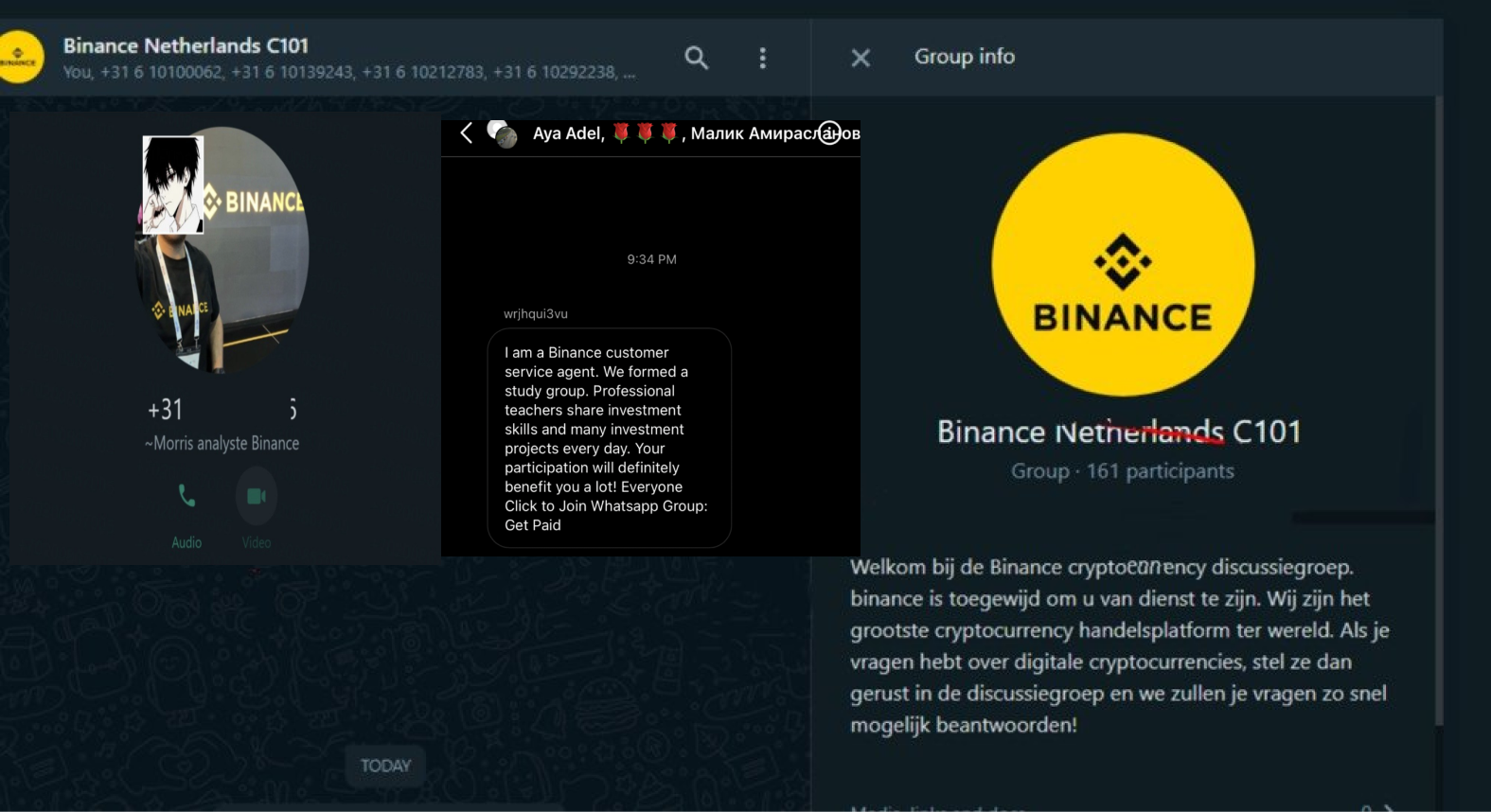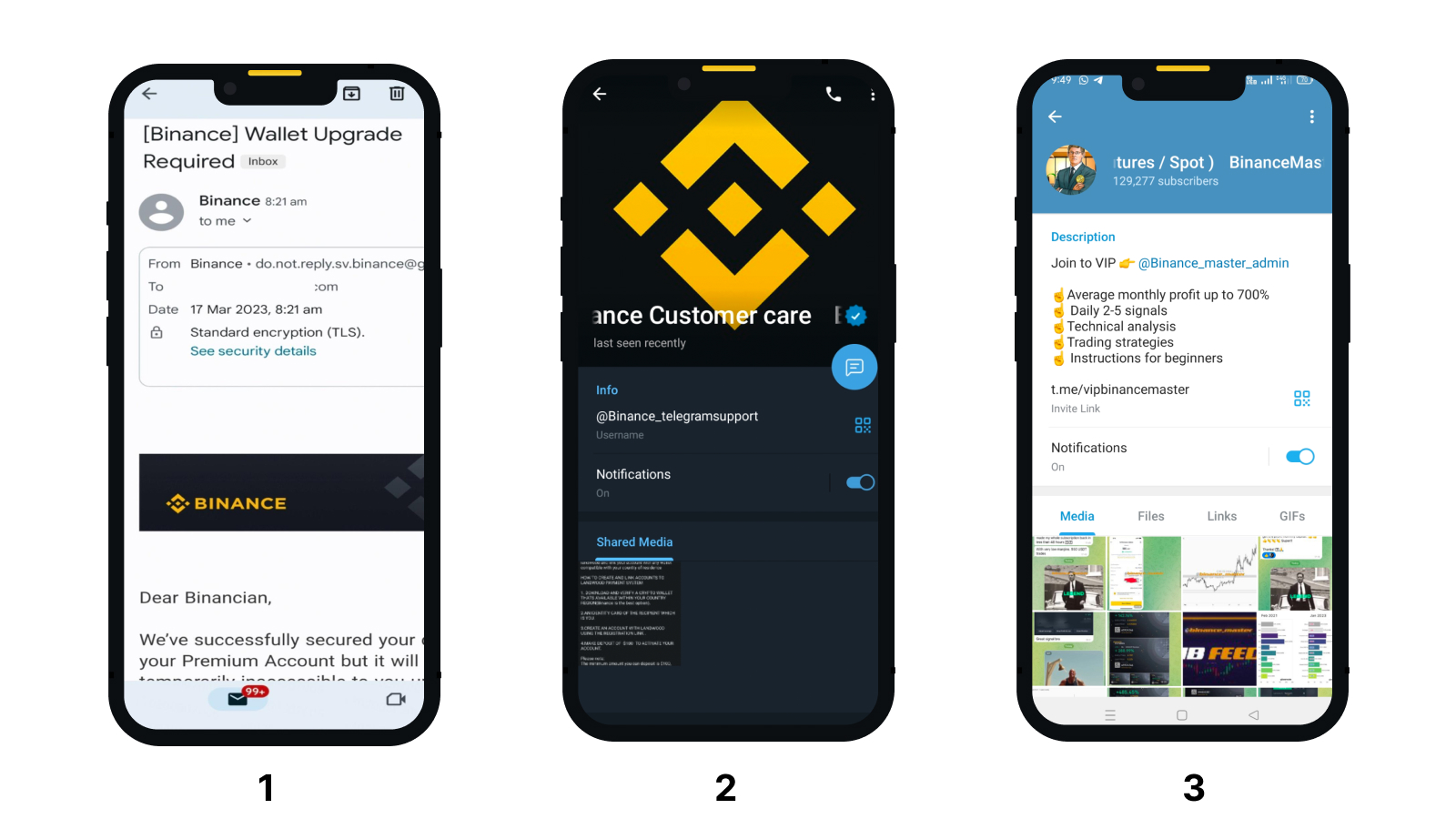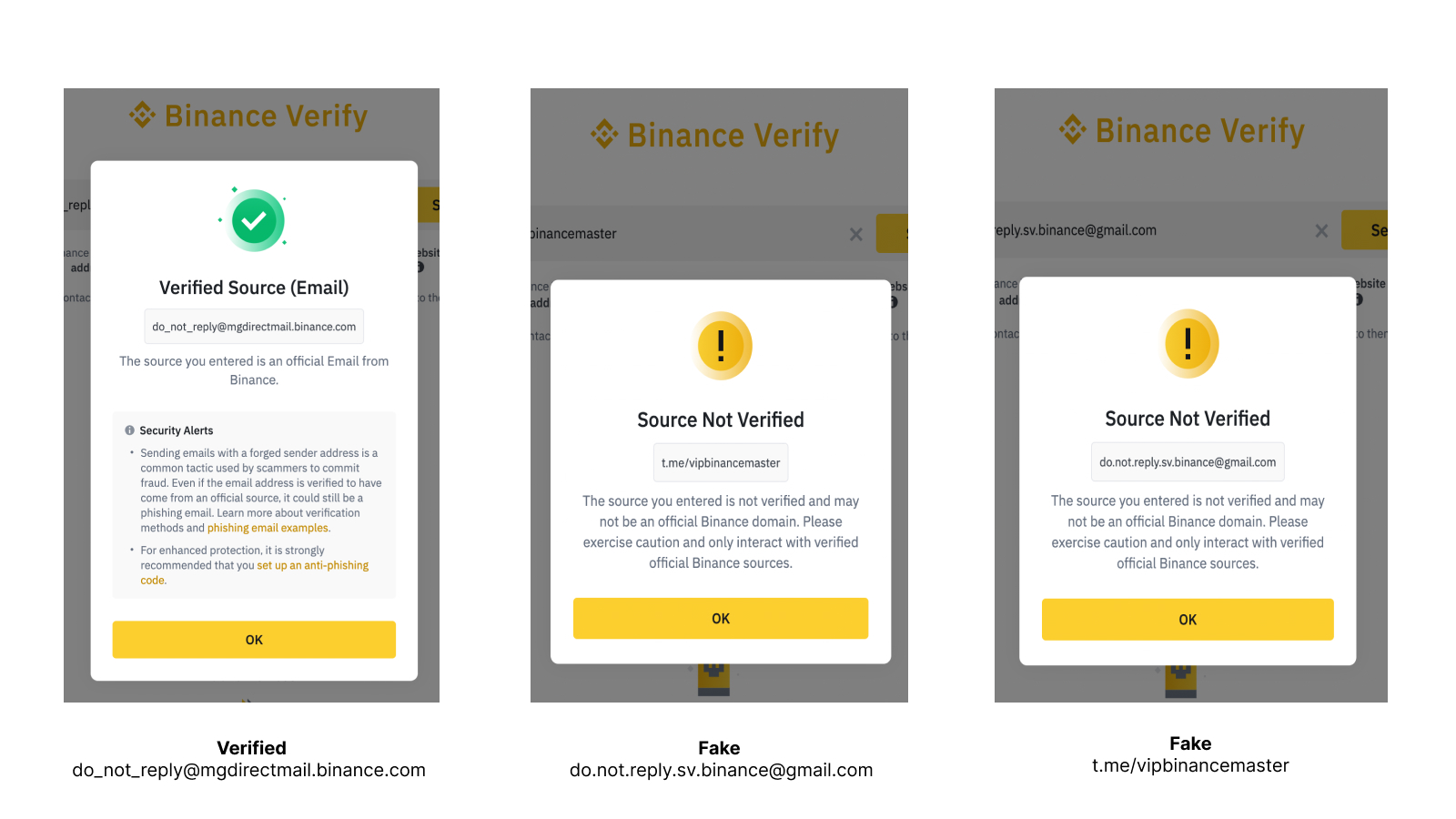Key points to remember
Fake and fake Binance scams occur when scammers pose as Binance employees or representatives in order to offer you bogus services designed to steal your money.
Scammers contact their potential victims via email or social media using an account similar to the official Binance accounts.
If you have been a victim of a fake Binance account, immediately report the situation to the relevant local authorities and the Binance customer support team.
Protect your account from scammers impersonating Binance employees. This week in How to Survive Scams, learn how scammers gain your trust and how to spot and report fake Binance profiles.

Nowadays, any Internet user can create a fake social media profile with the Binance name and logo.
You may have already seen fake Binance profiles in a Twitter thread or in the comments of an Instagram post, or one of them may have already contacted you on a messaging app like Telegram or Whatsapp.
In reality, we have no control over the moderation of these platforms, and these imposters can create a new account in seconds when we report them to the moderation teams of the platform concerned.
The most important thing to remember about our employees: under no circumstances will they proactively communicate with users on unofficial channels to offer them investment advice, free contests or a backdoor way to unlock their Binance account.
To help you protect your Binance account, we have broken down the usual modus operandi of imposters into four steps, which we describe below, with several screenshots of fake Binance accounts that we have had the opportunity to spot.
The four-step modus operandi of fake Binancian(s)
1. Create a fake identity
Step One: Craft the Perfect Lie. Imposter scams, which we covered in last week's article, typically involve a scammer posing as an authority figure like a police officer.
Here, the scammer creates a fake identity and prepares a detailed scenario to justify his status as a Binance employee and set up the scam. He creates a fake account, whose profile picture is the Binance logo or a photo of a person wearing a Binance t-shirt.
Their username usually includes a service name like Binance Customer Service, Binance Staff: xxx, or Binance Promo, and their email address looks a lot like our official email addresses.
2. Targeting victims in social groups
Scammers scour the black market for sensitive personal information like phone numbers, email addresses, personal details, and even purchase and travel histories. This illegally acquired information is then scrutinized to identify potential victims who are easiest to manipulate.
Some scammers prefer to attract new victims by creating an “Official Binance Group” supposedly run by real Binance employees, which offers investment advice and lucrative methods to earn more and more money.
3. Gain their trust and encourage them to take action
The scammer then begins to gain the victim's trust by following a carefully prepared script tailored to his new target, with the aim of building a bond with them, creating a false sense of familiarity, and ultimately luring them into the trap.
The most skilled scammers demonstrate an impressive ability to adapt, do not let up and improvise according to the victim's responses, even if the victim initially seems not to be playing along with the criminal and refuses to respond or cooperate.
4. Close the trap
The victim is fooled by the imposter’s fake identity and agrees to send them funds, or worse, provide them with the login credentials to their Binance account. The scammer now has access to the victim’s Binance account, and could transfer the entire crypto balance to their own wallet before the victim can regain control of their account.
Here are some concrete examples of this four-step procedure.
Concrete examples
Example #1: Insider trading information in a Binance WhatsApp group
A user, who we'll call Mark, is new to the crypto space, and a "Binance analyst" named Morris gets in touch with him.
Morris messages Mark on Instagram to let him know about a WhatsApp group that provides crypto investment tips and insider trading information, with up to 20% guaranteed returns. Morris invites Mark to join the group, which is home to several “Binance employees,” who regularly post guides on how to make money. The group is also frequented by other members who boast about their huge profits.
Mark also notes that the “Binance employees” answer all questions in a professional tone. Convinced that this is a legitimate group, Mark follows the tutorials and withdraws tokens to send them to the scammer’s wallet address.
Of course, this group, these employees and this advice are anything but authentic: Mark was the victim of an imposter scam.
“Welcome to the Binance Cryptocurrency Discussion Group. Binance is the world’s largest cryptocurrency trading platform, completely at your service. If you have any questions about cryptocurrencies, ask them in this group and we will answer them as soon as possible.” - French translation of the scammer’s WhatsApp group description.
Example n° 2: the "Binance trading expert"
Social media platforms like Instagram are full of fake profiles pretending to be Binance affiliates or employees. For example, we recently discovered a scammer who deliberately added a @binance username in his profile description. You’ll also notice that his profile description contains a lot of trending words like “Trading Expert” and “Investment Specialist.”
We are trusted by millions of users around the world, and unfortunately, malicious actors often try to take advantage of our influence and reputation in the crypto industry to target unsuspecting victims. Binance employees are instructed to never trade or provide investment advice: be wary of “Binance employees” claiming to be trading or investing experts. Our affiliates and KOLs are subject to strict verification to ensure their content is not harmful, and are approved by Binance; however, their opinions and views do not reflect our own.
To spot fake Instagram profiles, consider looking at their follower count and comparing it to the number of likes or comments on their posts: if there is a big discrepancy between these numbers, for example 25,000 followers for 100 likes and two comments per post, it is most likely a fake profile.
Other examples
Wallet Upgrade. The user receives a fake email from Binance sent from the address “do.not.reply.sv.binance@gmail.com” asking them to “upgrade [their] app”. You will notice that the email client is Gmail, and is not our official domain binance.com.
Binance Customer Tracking. The scammer attempts to trick a user by pretending to be a Binance customer service employee, with the alias “Binance Customer Tracking.”
Binance VIP. The scammer is dispensing fake crypto investment advice by impersonating a Binance employee who is part of the Binance VIP team, our incentive program for high-volume and institutional professional traders.
Tips to avoid falling into the trap of fake Binancian(s)
Beware of so-called Binance staff
Do not automatically trust any so-called “Binance employee” who contacts you via phone or social media such as Telegram, WhatsApp, Instagram, etc. Our employees will never voluntarily send messages to users on unofficial channels to provide investment advice, contests, or account unlocking services.
Pay attention to the username or email address, especially the domain name at the end of the email address. You can verify the authenticity of email addresses and website links at Binance Verify. Be careful if the link is “Verified,” and avoid those whose source is “Unverified.”
Protect your confidential information
To protect yourself from fraud attempts, keep all your personal information secure, including your purchase and travel history and contact details.
As we explained earlier in this article, scammers often use the Dark Web to harvest neglected personal data to find their next target.
If you have been scammed
If you have unfortunately been scammed, be on guard for additional scam attempts by the same malicious actors and do not process any withdrawals or transfers initiated by unknown parties.
We recommend seeking help from government authorities if you have been a victim of a fake Binance account scam. If your Binance account is compromised, report the situation immediately by following the steps in our guide How to Report a Binance Customer Support Scam?
We also recommend that all users, regardless of their seniority on the platform, read all the articles in our How to Survive Scams series to best prepare themselves to combat the most common crypto scams.
For more information
(Blog) How to Survive Scams: The Complete Guide to the Most Common Crypto Scams
(Blog) How to Survive Scams: Fake Crypto Investments to Beware of
(Blog) How to Survive Scams: Warning Signs That Indicate an Imposter Scam
(Blog) How to Survive Scams: Fake Job Offers to Watch Out For
Disclaimer and Risk Warning: This content is provided to you “as is” for general informational and educational purposes only, without any representation or warranty of any kind. It should not be construed as financial advice or a recommendation to purchase any specific product or service. Prices of digital assets can be volatile. The value of your investment may go down as well as up, and you may not get back the amount you invested. You are solely responsible for your investment decisions and Binance is not responsible for any losses you may incur. This does not constitute financial advice. Please review our Terms of Use and Risk Warning for more information.









